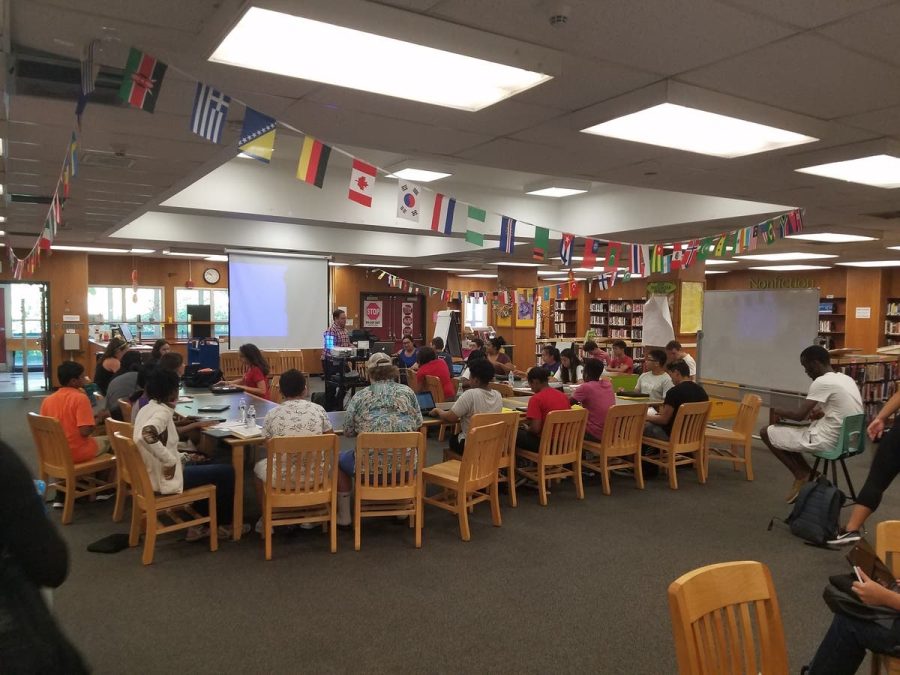The Cafeteria and Allergies.
May 16, 2022
The school cafeteria is the hub of the school. It is filled with students from all grades and backgrounds. It is most occupied during the three lunches where ravenous students come in from their classes to get their food.
Picture an ordinary student who has just come from a class and is looking to get food to appease their rumbling stomach. They step into the cafeteria and begin their hunt. They see some fries. Whoops! This ordinary student happens to be allergic to potatoes. They begin their search again only to give up soon after. After all, it is the 3rd lunch and there is almost nothing left in the cafeteria.
“It’s kinda strange that everything they have they put potatoes,” according to an anonymous freshman, “even the pizza.” Having an allergy puts students in a dilemma, eat in the cafeteria and risk exposure to their allergen or not eat. This dilemma happens to dozens of students each lunch period. With allergies and intolerances from anything to fruit and potatoes to dairy and gluten, students stress about food choices every day. A lot of students struggle with lactose intolerance, and because cheese is such a common ingredient in the lunch, these students often prefer not to eat. Sophomore Kira Elliot who has a lactose intolerance can see the lack of options. “The chicken sandwiches have no dairy, but I feel like the main meal usually has dairy,” Elliot says. And she’s not alone, most of the students interviewed said they often went without eating to avoid their allergy or intolerance. The chicken sandwich, although one of the only allergen friendly meals in the cafeteria, is widely criticized. “The food is OK at best,” said a junior. “I would never want to eat the chicken sandwiches because I’m pretty sure they’re made out of rat meat.”
It’s vital that we don’t pin all the blame on the cafeteria staff. The cafeteria staff, even equipped with the bare minimum, still makes gluten free pizza for the students that request it. This opportunity is not very widely known, but we should still appreciate the effort made by the cafeteria staff. One simply needs to request a gluten free pizza at the beginning of the day.
Personally, eating in the cafeteria is one of the riskiest things I could do. Due to a genetic autoimmune disease known as celiac disease or coeliac any exposure to gluten can cause an immune reaction that harms the small intestine and causes malnourishment along with painful symptoms. For example, if someone with celiac wanted to eat fries, they would have to make sure that the potatoes are not fried in oil that has touched anything containing gluten. This means that they would not be able to eat McDonald’s fries because the oil fries chicken nuggets along with french fries. The danger of cross contamination from oil to countertops makes eating at the cafeteria nearly impossible for someone with celiac disease. For me even the gluten free pizza carries too much of a risk for cross contamination.
We can see that people with allergies or intolerances struggle each day to be safe and secure with their food choices. For many, bringing their own lunch or avoiding the cafeteria is the best way to go. We also encourage students to ask the cafeteria staff what they can do about your allergy, as they are often very flexible. Let’s continue to work on making the cafeteria an accepting place for every kid in the school.

